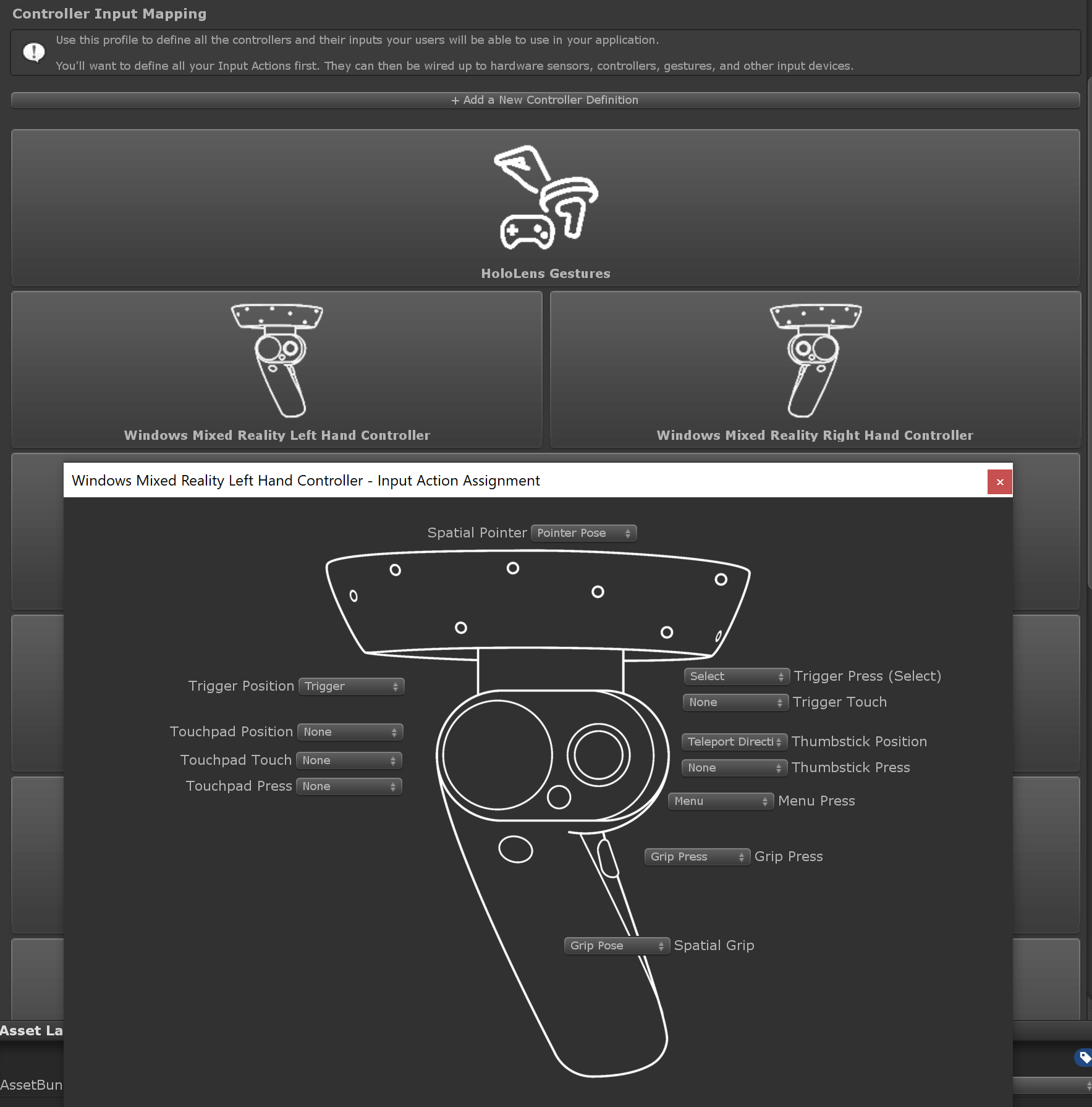Controllers
Controllers are created and destroyed automatically by input providers. Each controller type has a number of physical inputs defined by an axis type, telling us the data type of the input value (Digital, Single Axis, Dual Axis, Six Dof, ...), and an input type (Button Press, Trigger, Thumb Stick, Spatial Pointer, ...) describing the origin of the input. Physical inputs are mapped to input actions via in the Controller Input Mapping Profile, under the Input System Profile in the Mixed Reality Toolkit component.
